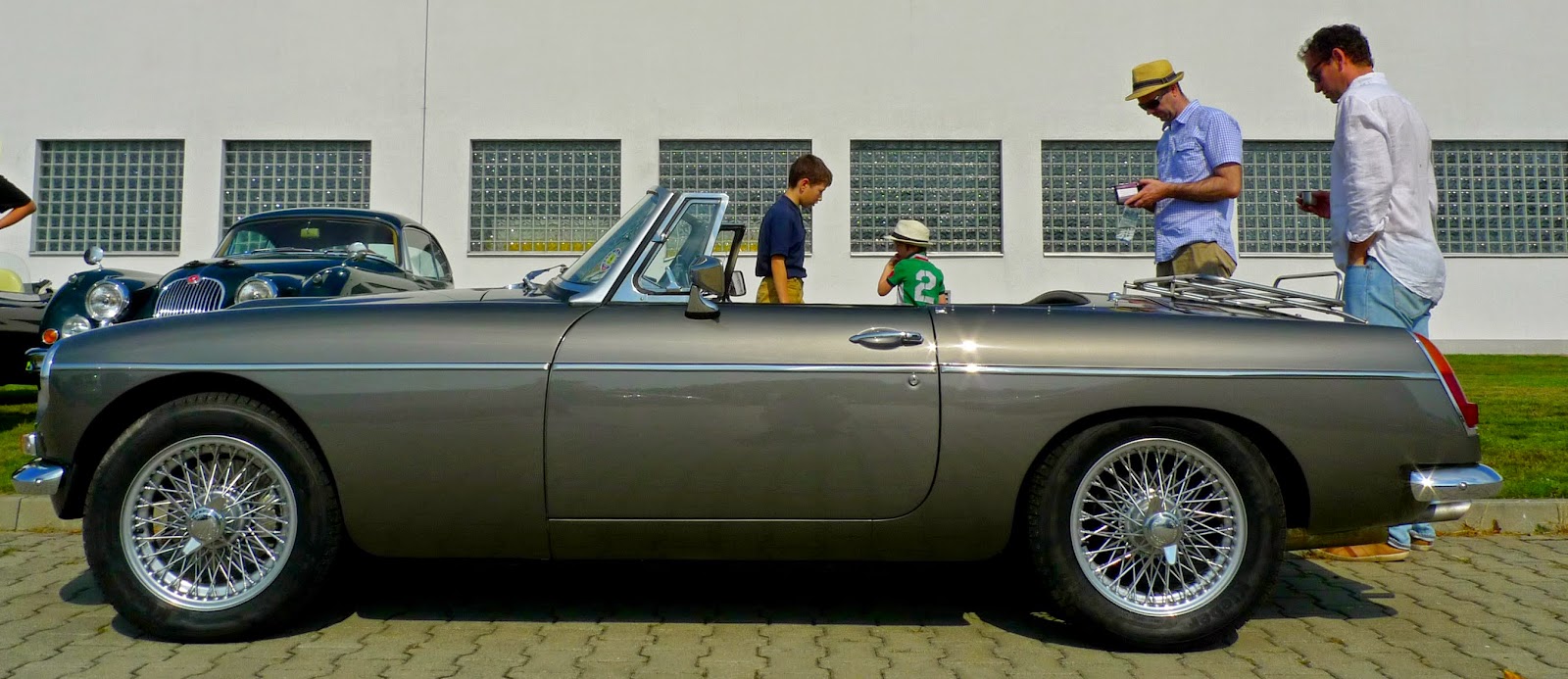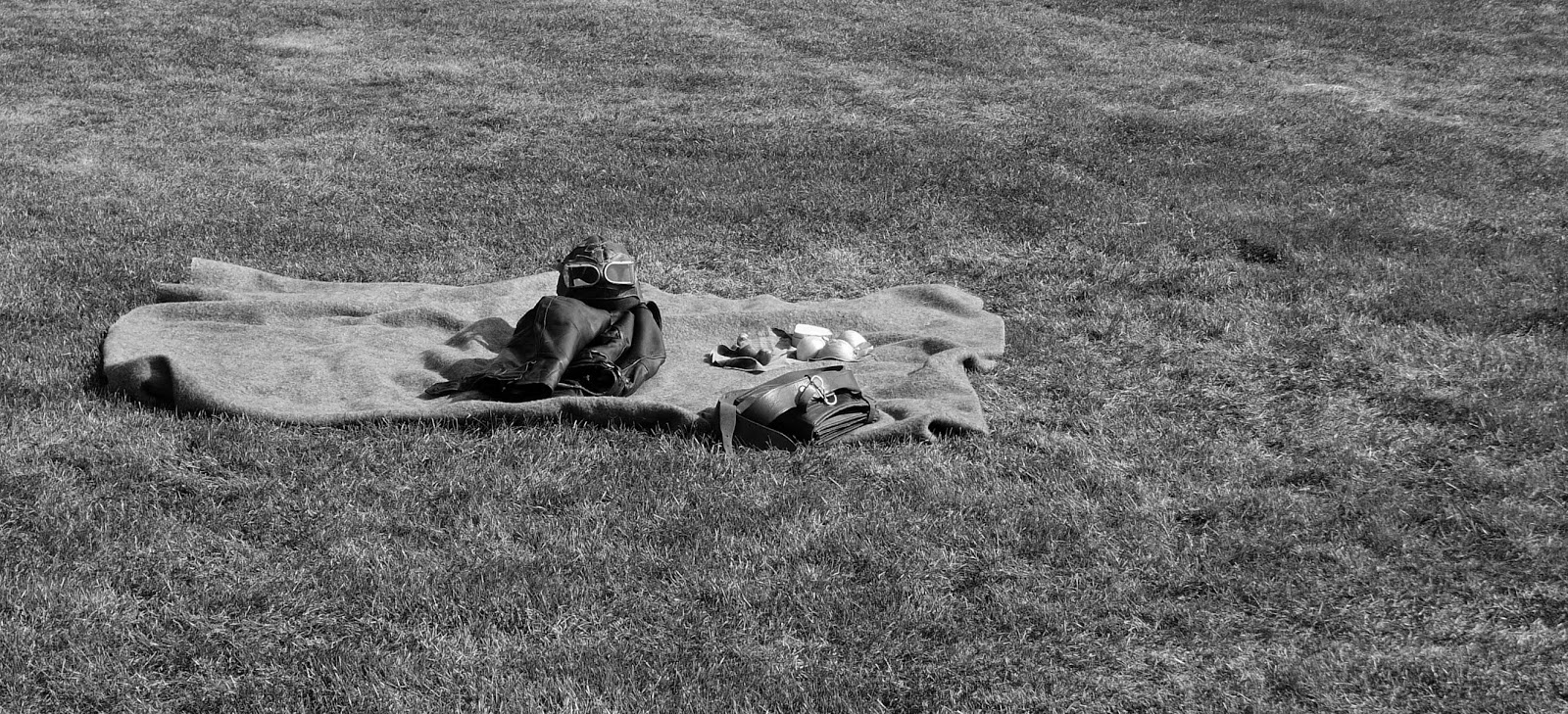Click on photographs to enlarge - far superior rendition
We
had an excellent day with a lovely display of 8 of our cars one of which was Andy
Fincham’s superb recently restored MGC which he had been driving for a full 12
hours after delivery. He came up trumps and appeared!
The
vintage air show and pic-nic were in brilliant sunshine. One of the closest
days to 'an English event’ I have yet attended in Poland and superior in some
respects. Of course we all all know Poles are among the most brilliant of pilots
– the Spitfire, Hurricane and Bomber Command record we are familiar with but we should not neglect the extraordinary resistance and magnificent and valiant flying in outclassed PZL P11 fighters against the superior Luftwaffe machines at the outbreak
of WW II. A truly great and heroic story too often overlooked.
.jpg) |
A PZL P11 fighter |
The above is the sole surviving fighter from the Polish Air Force of 1939. The P.11c was the main production variant of the 325 built. Polish serial '8.63'. c/n 562. It is now on display taking pride of place in the new entrance building at the Muzeum Lotnictwa Polskiego in Krakow.
The following is taken from the museum's website:-
"In the last months of 1927, the Department of Aeronautics commissioned to the Central Aviation Works (which were renamed the State Aviation Works in 1928), the design of a fighter which could be a follower of the commonly used, SPAD aircraft. The work over the new airframe was started by Zygmunt Puławski. The first from the family of Puławski aircraft drew international attention. Next, came the P.6 and the P.7. Again both arose interest in foreign constructors and were awarded at the international air shows. In 1930, the Department of Aeronautics commanded to design a predecessor for the P.6 and the P.7.
The new, P.11 fighter was a single seat, all metal, upper wing aeroplane with fixed undercarriage. The aircraft featured original technical and technological solutions. The first, was the Wibault metal corrugated skin covered wing, having an unusual shape and construction, enabling to gain low weight, high durability, good aerodynamics features and an excellent front and side visibility. This unconventional solution, called abroad the "Polish wing" or "Puławski's wing" gave a gull wing shape to the wings. Another feature was a scissors type undercarriage with shock absorbers buried inside the fuselage. Worth mentioning was also the semi - monocoque fuselage construction used earlier in the P.7 fighter and (dropped in case of fire) the main fuel tank.
The work of Zygmunt Puławski, (who died while test flying his new construction) was continued by Wsiewołod Jakimiuk. The prototype of the P.11 was test flown in 1931, by Bolesław Orliński. Displayed in 1934, at the Paris Air Show it aroused big interest among specialists. A technologically advanced, contemporary construction, it possessed excellent flying characteristics and a formidable performance. Fifty of the P.11a, were produced for the Polish Air Force and fifty of the P.11b (powered with the Gnome-Rhone 9K engine) for export to Romania. The PZL P.11c, powered with the Mercury IV S2 engine, flew for the first time in summer 1934. In comparison with earlier versions, it featured an improved flight stability, better cockpit visibility and increased fire power. In total, 175 P.11c fighters were built in Poland. Tests with naval, winter (with skis) and dive bombing versions were also carried out, but didn't come beyond the study phase. The engine was then changed for the Gnome-Rhone Mistral.
The aircraft in this configuration served as the sample for the licence built P.11f. Seventy aircraft of that version were produced at the Romanian IAR Works. In autumn 1936, the Spanish republican government made efforts to buy 36 airframes, but because of the Polish declaration of neutrality, this transaction was not finalised. The followed type, the P.24 was the last of the family of these aircraft. Armed with two cannons and two machine guns, it was considered as the fighter with the biggest fire power then. In 1937, with the introduction into service in other countries of the more modern, low wing fighters, the P.11 became obsolete.
The PZL P.11c, was a basic fighter in service with the Polish Air Force in September 1939. It gave way to the new generation of aircraft, as the German Bf-109 was. However, thanks to the skills of the Polish pilots, the "eleveners" scored 120 enemy aircraft to their credit. The exhibit on display, flew with the 121st Flight of the 2nd Air Regiment in Krakow. Today, this aircraft is considered as the most precious exhibit at the Polish Aviation Museum, but not because of the material value. It is the only saved Polish fighter from the September 1939 campaign, the symbol of the Poland's lone struggle with the German Luftwaffe." (photo thanks to Alan Wilson - Aviation enthusiast)
I was
very moved to see an excellently arranged and exciting event with fascinating
Russian and Polish aircraft never seen in England. Superb restorations which are horrendously expensive. Great atmosphere. The acrobatic
display was quite incredible. Such manoeuvres are rarely seen at public displays.
I
used to go to the Duxford Air Show in Cambridgeshire and the Shuttleworth Collection regularly when living in
London. This event in Poland (the first at this venue) has great
potential. Five even ten years ago this sort of event would have been
absolutely impossible to mount in Poland. This is all I can say.
How the country is coming on….amazing really.
As ever I will allow the photographs and captions do the talking.
 |
Some of the CCC cars at the event (MM) |
(MM)
 |
A glass is raised by your 'Captain' and Andy Fincham to celebrate the completion of the Rzepecki company's fine restoration of Andy's MGC . The TR 6 of Paul Ayre hovers in the background (MM) |
 |
 |
Andy elucidating those finer points of arcane MG lore known only to MG drivers (BZ) |
 |
The MGC - superb gunmetal/pewter metallic colour (MM) |
 |
| Everything open with Iain Batty attempting a dignified exit or any exit as it seemed at the time! (MM) |
 |
Dashing, handsome and happy is our erstwhile Fincham...Andy Fincham (MM) |
 |
The Stearman in flight (MM) |
 |
More relaxed and less people than at Duxford - the blessings of Poland as it discovers... (MM) |
 |
Breathtaking acrobatics (MM) |
Time for a spot of lunch at the Sobienie Krolewski Golf Club
Mirek Staniszewski with his wife Marzena and Artur Gabor head off in the Fiat 124
Mirek Staniszewski with his wife Marzena and Artur Gabor head off in the Fiat 124
Blazej and Kaja prepare to leave in the E-Type
'Easy does it!' Negotiating the high kerb in the low-slung Ferrari 328.
That blessed kerb prevented some of us parking on the grass! (MW)
And so we made our exhilarated and weary way home through a lovely late summer afternoon. September is one of the finest months in Poland. En route I stole a few redundant apples - a highly controversial fruit in Poland and Russia just now - from an orchard along the way.
Michael Moran (Chairman CCC)





















No comments:
Post a Comment